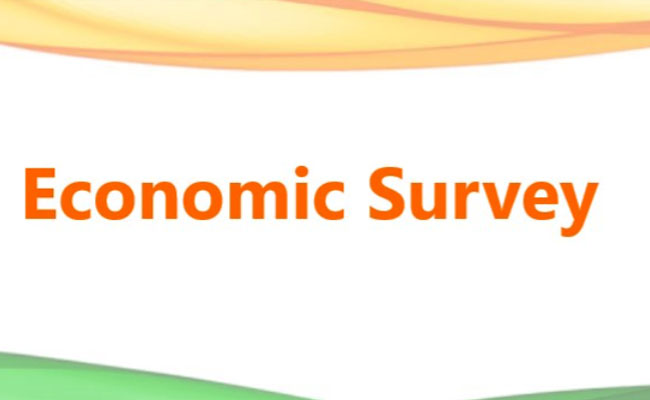Economic Survey: Health Expenditure at 2.1% of GDP in FY23
Sakshi Education

- Health Expenditure has been a major concern for the government since the COVID pandemic. As the pandemic started reducing, the governments were burdened heavily to focus on the lost track of other disease elimination programs.
- For instance, the cases of malaria, AIDS, hepatitis, etc in India and several other countries increased exponentially. These diseases increased because the governments were forced to pay less attention.
- The entire attention and complete focus were on the COVID pandemic. Health expenditure was not sufficient to focus on all diseases. In the fiscal year 2022-23, central and state governments spent 2.1% of their GDP in 2023. In 2022, it was 2.2% and in 2021, it was 1.6%.
- Health expenditures made on social services increased to 26% in the fiscal year 2023. It was 21% in the fiscal year 2018-19.
- The government’s share in the total expenditure of the country increased to 40.6% in the fiscal year 2018-19. It was 28.6% in 2013-14
- Out of Pocket Expenditure decreased to 48.2% in the fiscal year 2018-19. It was 64.2% in 2013-14
- Social security expenditure in the health sector increased to 9.6% in the fiscal year 2018-19. It was 6% in 2013-14. The social security expenditure on health includes the following
- Medical reimbursements the central government makes to the government employees
- Social Health Insurance Programmes
- Health insurance schemes financed by the government.
>> Download Current Affairs PDFs Here
Download Sakshi Education Mobile APP

HIGHLIGHTS OF ECONOMIC SURVEY
- In November 2022, the retail inflation returned to the target set by RBI
- The government of India is focusing on recovery and putting the economy back on the pre-pandemic path
- Direct Tax collections between April 2022 and November 2022 were buoyant. Tax buoyancy means the revenue rate increases without an increase in the tax rate
- The urban unemployment rate is decreasing
- The Gross Non – Performing Assets ratio of the Scheduled Commercial Banks have reduced to 5. This is the lowest in the past seven years.
- Health expenditure of Central and State Government in Fiscal Year 2023: 2.1% of GDP. It was 2.2% in 2022 and 1.6% in 2021.
- 220 crores of COVID vaccines were administered in FY23
- From the UNDP’s Multi-dimensional Poverty Index: 41.5 crore people out of poverty between 2005 and 2019
- Achieve net zero emissions by 2070
- National Green Hydrogen Mission: to make India energy independent by 2047
- Agricultural investments from the private sector: Increased by 9.3% in 2020-21
- National Food Security Act: 81.4 crores benefitted
- PM KISAN: 11.3 crores of farmers benefitted between April and July in 2022-23
- International Year of Millets: 2023; UN announced upon India’s insistence. India to push millets production
- Merchandise Exports: 332.8 billion USD between April and December 2022
- Remittances in 2022: 100 billion USD; largest in the world
- UPI-based transactions: Increased by 121% between 2019 and 2022
- The focus of Government Reforms
The Economic Survey of 2022-23 says that the Government of India is to focus on the following reforms:
- Ease of living for the public
- Deliver governance efficiently and gain the trust of the citizens
- Develop partnerships with the private sector to develop the economy
- Increase the production from the agricultural sector
Published date : 01 Feb 2023 05:53PM




















